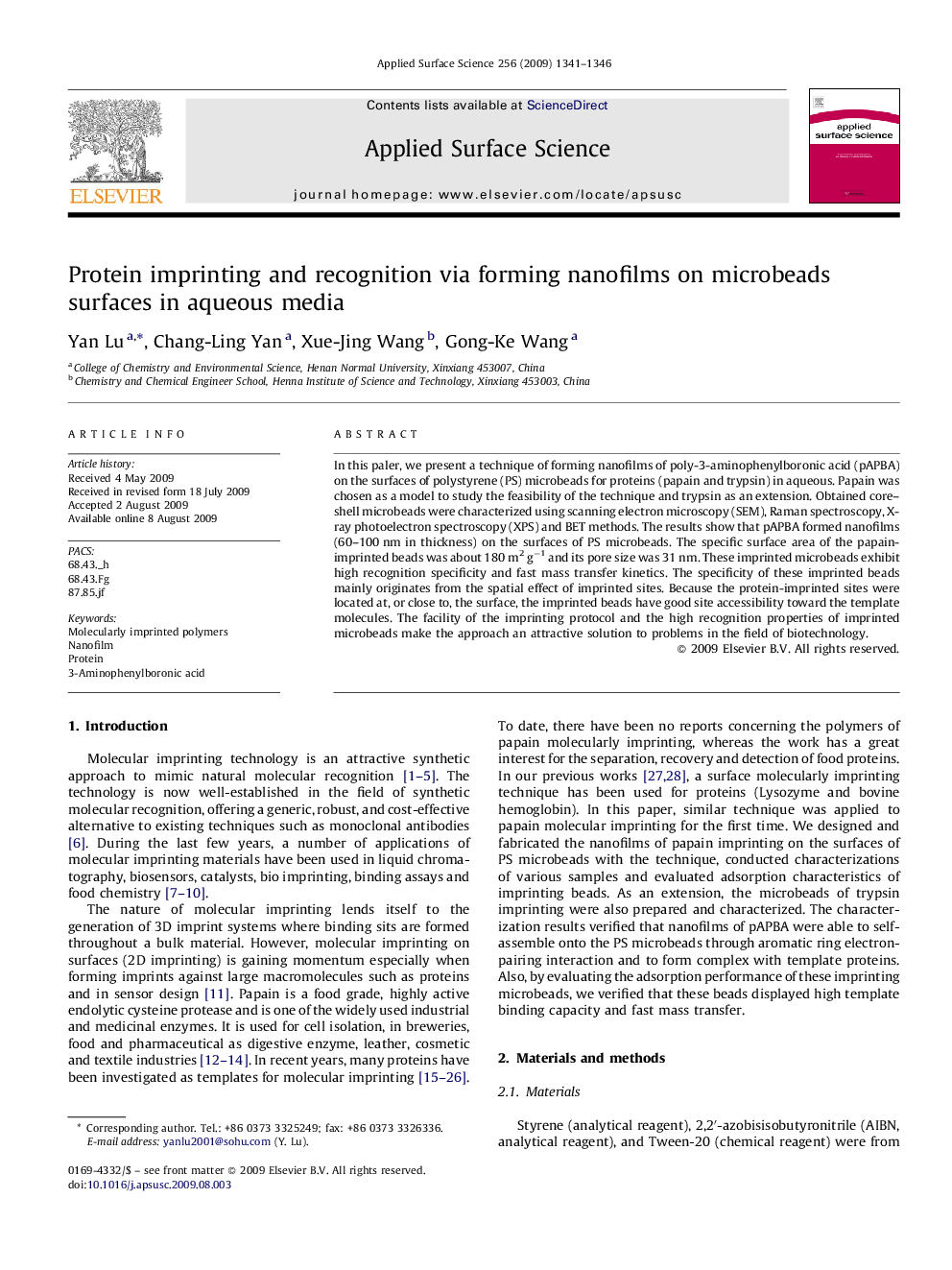| Article ID | Journal | Published Year | Pages | File Type |
|---|---|---|---|---|
| 5360833 | Applied Surface Science | 2009 | 6 Pages |
Abstract
In this paler, we present a technique of forming nanofilms of poly-3-aminophenylboronic acid (pAPBA) on the surfaces of polystyrene (PS) microbeads for proteins (papain and trypsin) in aqueous. Papain was chosen as a model to study the feasibility of the technique and trypsin as an extension. Obtained core-shell microbeads were characterized using scanning electron microscopy (SEM), Raman spectroscopy, X-ray photoelectron spectroscopy (XPS) and BET methods. The results show that pAPBA formed nanofilms (60-100Â nm in thickness) on the surfaces of PS microbeads. The specific surface area of the papain-imprinted beads was about 180Â m2Â gâ1 and its pore size was 31Â nm. These imprinted microbeads exhibit high recognition specificity and fast mass transfer kinetics. The specificity of these imprinted beads mainly originates from the spatial effect of imprinted sites. Because the protein-imprinted sites were located at, or close to, the surface, the imprinted beads have good site accessibility toward the template molecules. The facility of the imprinting protocol and the high recognition properties of imprinted microbeads make the approach an attractive solution to problems in the field of biotechnology.
Related Topics
Physical Sciences and Engineering
Chemistry
Physical and Theoretical Chemistry
Authors
Yan Lu, Chang-Ling Yan, Xue-Jing Wang, Gong-Ke Wang,
